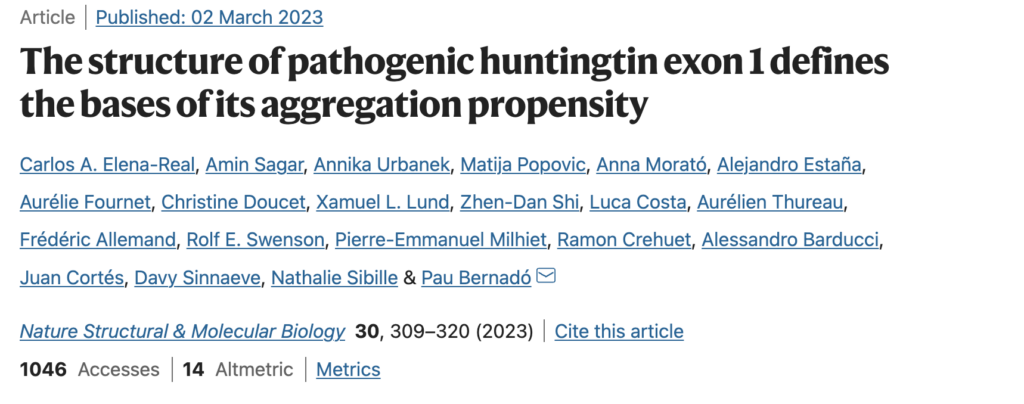
Huntington’s disease is a neurodegenerative disorder caused by a CAG expansion in the first exon of the HTT gene, resulting in an extended polyglutamine (poly-Q) tract in huntingtin (httex1). The structural changes occurring to the poly-Q when increasing its length remain poorly understood due to its intrinsic flexibility and the strong compositional bias. The systematic application of site-specific isotopic labeling has enabled residue-specific NMR investigations of the poly-Q tract of pathogenic httex1 variants with 46 and 66 consecutive glutamines. Integrative data analysis reveals that the poly-Q tract adopts long α-helical conformations propagated and stabilized by glutamine side chain to backbone hydrogen bonds. We show that α-helical stability is a stronger signature in defining aggregation kinetics and the structure of the resulting fibrils than the number of glutamines. Our observations provide a structural perspective of the pathogenicity of expanded httex1 and pave the way to a deeper understanding of poly-Q-related diseases.
